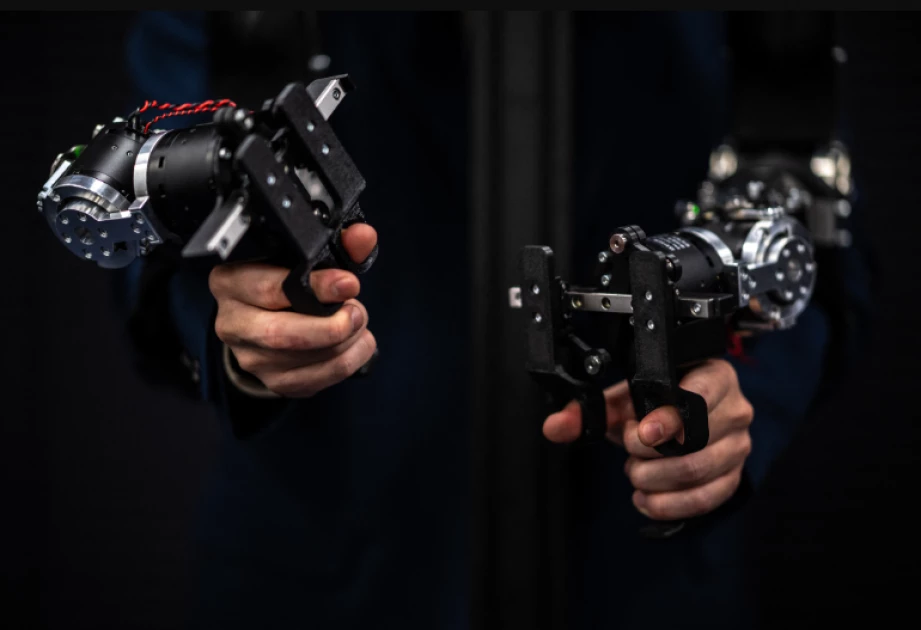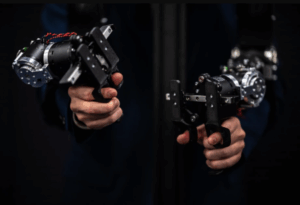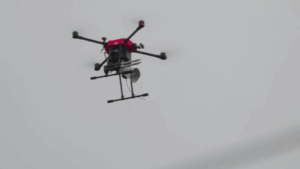The New Era of Physical AI: How Humanoid Robots Are Moving From Sci-Fi to Real Life
Other companies are on the same track. U.S.–Norwegian firm 1X will start selling its home-helper robot, NEO, to American households next year.

These robots are being designed with soft exteriors and advanced safety systems so they can work in the unpredictable and ever-changing environment of nursing homes. Photo/Courtesy
By Ruth Sang
A set of robotic arms, designed to imitate human movement, rotates and flexes as a researcher wearing a virtual-reality headset performs smooth hand gestures. These arms, created by Tokyo-based firm Enactic, are part of a growing push toward what experts are calling “physical AI”—intelligent machines capable of interacting with the real world. With enough training, the company says these robotic limbs could eventually handle routine tasks independently, such as washing dishes or folding laundry in Japan’s understaffed care homes.
It represents a new era in the development of artificial intelligence-one where AI, which has transformed the digital world, will now also rapidly spread into physical spaces: in self-driving cars, service robots, and humanoid machines. “The next wave of AI is physical AI,” declared Nvidia CEO Jensen Huang in a proclamation that encapsulated the moment last year. He defined it as intelligence that understands how to apply the laws of physics safely to human environments.
Huge sums of money are pouring into the field. Analysts at Morgan Stanley predict that more than a billion humanoid robots could be operating around the world by 2050. Viral videos of humanoids dancing or lifting heavy loads in China and the U.S. have only added to the public’s excitement—and anxiety—about the rise of the machines.
One of the innovators leading this movement is 24-year-old Hiro Yamamoto, Enactic’s chief executive officer. Already, the company’s OpenArm training platforms are being used at institutions such as Stanford University and Nvidia. Yamamoto intends to start deploying a new line of humanoid robots as early as next summer. These robots are being designed with soft exteriors and advanced safety systems so they can work in the unpredictable and ever-changing environment of nursing homes.
Elsewhere, at Guangzhou, Chinese EV maker XPeng left observers’ jaws agape as it introduced a tall humanoid covered in white cloth and a glowing visor. China’s robotics industry-supported by the government funding and strong supply chains-is now competing hard against well-established U.S. firms such as Boston Dynamics. XPeng chief executive He Xiaopeng says that someday robot sales might be higher than car sales. But he acknowledges that robot hands are still wearing out rapidly-a replacement often costs as much as several years of salary for a factory worker.
Still, XPeng executives believe that AI-driven humanoids could eventually take on “almost any role,” from childcare to gardening, once their training data becomes extensive enough.
Training physical AI is much more complex than training language models. Robots need to learn from text, visual cues, depth perception, and spatial awareness. According to Yamamoto, the most reliable method today is to teleoperate robots and have them emulate human movements. Some 30 to 50 demonstrations of a particular task usually suffice for an AI model to get fine-tuned and be able to carry out that activity on its own.
Several care facilities in Japan are already in discussions with Enactic to test teleoperated robots for basic chores, freeing human caregivers to attend to the elderly. The hands-on fieldwork, says Yamamoto, will help refine the robots’ abilities until they become fully autonomous.
Other companies are on the same track. U.S.–Norwegian firm 1X will start selling its home-helper robot, NEO, to American households next year. Even at $20,000, demos suggest that the robot still has a hard time performing simple tasks, such as closing a dishwasher.
Glitches like these are common. Recently, a Russian humanoid robot fell forward onstage during its debut, a reminder of how robotics hardware has yet to catch up with AI software. Sara Adela Abad Guaman, robotics researcher at University College London says that part of why animals succeed is because their bodies are perfectly adapted to their environments. That’s something robots have yet to figure out. Yet despite the huge obstacles, investment keeps on pouring in. In January, SoftBank announced that physical AI would be its “next frontier” and revealed a $5.4 billion deal to acquire industrial robotics maker ABB Robotics. While fears of automation displacing human jobs persist, Abad believes humans will always be indispensable. “Our sense of touch is incomparable,” she says—a reminder that even as robots advance, they still have much to learn from the natural world.






